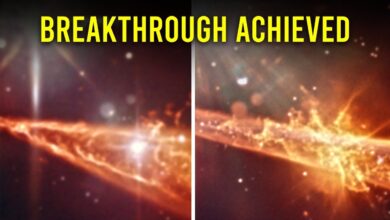AI Just Cracked the Dead Sea Scrolls – You Won’t Believe What They Found!

Seventy years after the Dead Sea Scrolls were first unearthed, nearly 80 new fragments have been brought to light, reigniting one of the greatest archaeological mysteries of our time. For two millennia, these fragile scrolls lay buried beneath desert sands, holding secrets scholars believed they had already exhausted. That was, until artificial intelligence took a closer look—and uncovered revelations that could reshape everything we thought we knew about history, faith, and identity.
The story begins in 1947, when a Bedouin shepherd stumbled upon the hidden caves of the Judean desert. Inside were the Dead Sea Scrolls, texts sealed away in jars for more than 2,000 years. Their discovery forever changed our understanding of biblical history, early Judaism, and the roots of Christianity. Among the scrolls were copies of nearly every book of the Hebrew Bible, the oldest surviving versions ever found. Scholars saw them as more than ancient manuscripts—they were windows into an era of upheaval, faith, and survival.
Yet despite decades of study, much of the collection remained frustratingly incomplete. Many fragments were too faint to read, their ink faded beyond human recognition. That changed with the arrival of AI. Using hyperspectral imaging, scientists trained algorithms to detect even invisible traces of ink and patterns of handwriting overlooked by the human eye. Suddenly, the scrolls began to speak again.
But what emerged was not simply theology. The AI revealed something far more profound: signs of hurried, trembling handwriting, letters formed under duress rather than in calm scribal tradition. These were not the controlled strokes of professional scribes. They were the marks of people writing on the run, in hiding, perhaps facing imminent death.
Even more striking were fragments recovered from the so-called “Cave of Horror.” Unlike the carefully preserved scrolls of 1947, these pieces were torn, burned, and scattered. With AI’s help, researchers uncovered a startling mixture of Hebrew and Greek—a reflection of life under Roman rule. While most of the text was in Greek, the sacred name of God, Yahweh, was carefully preserved in ancient Hebrew letters. This deliberate choice revealed a community resisting assimilation, clinging to its faith while navigating political oppression.
Passages from Zechariah and Nahum stood out—texts speaking of exile, divine judgment, and the promise of deliverance. These verses were not simply scripture. They were rallying cries. Messages of hope, resistance, and survival written in the shadow of Rome’s brutality.
The AI didn’t just recover words—it uncovered intent. Altered phrases, irregular structures, and linguistic shifts hinted that the scrolls were acts of defiance, composed during the Bar Kokhba revolt, a desperate uprising against Roman occupation. The uneven handwriting, filled with tremors and broken strokes, spoke of fear, urgency, and determination. These were not just texts of devotion. They were weapons of identity, documents of rebellion, the last words of a people fighting to endure.
For decades, the Dead Sea Scrolls were studied as religious treasures. Now, through AI, they are being reinterpreted as something more: testimonies of resistance preserved across millennia. They reveal not only the earliest voices of faith but also the unyielding spirit of a community refusing to be erased.







